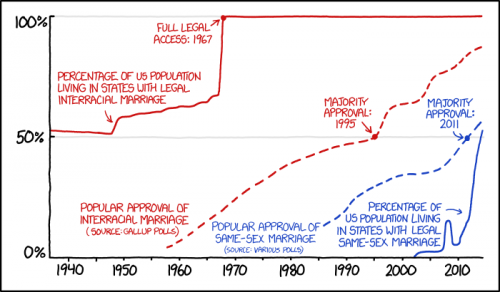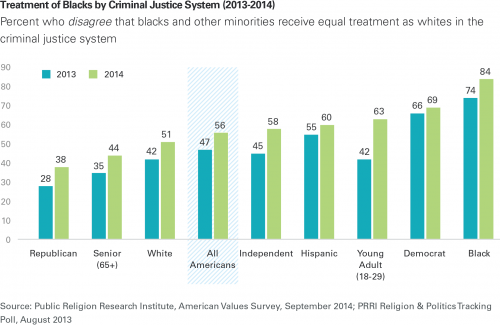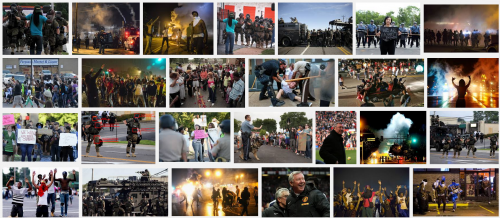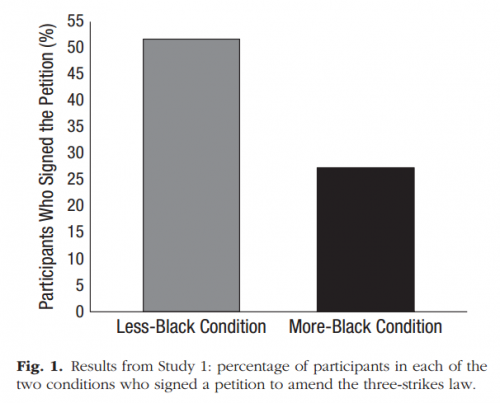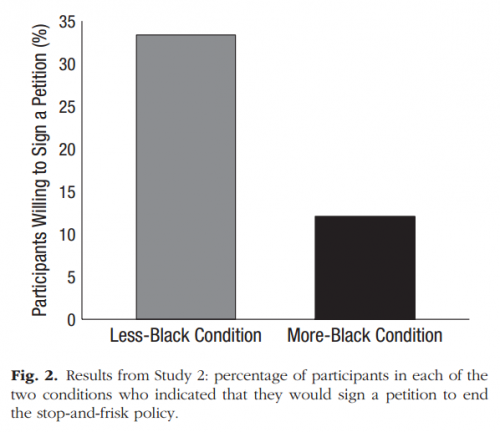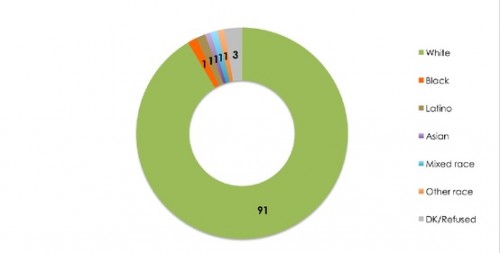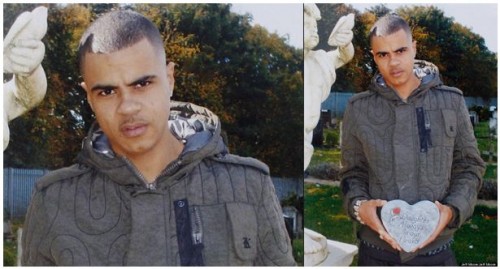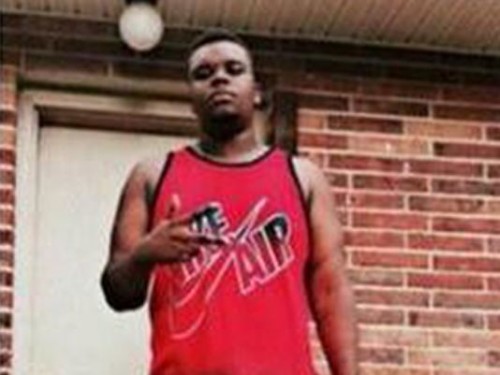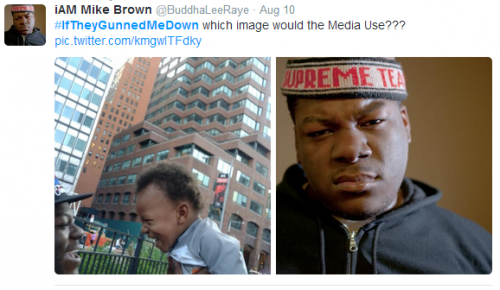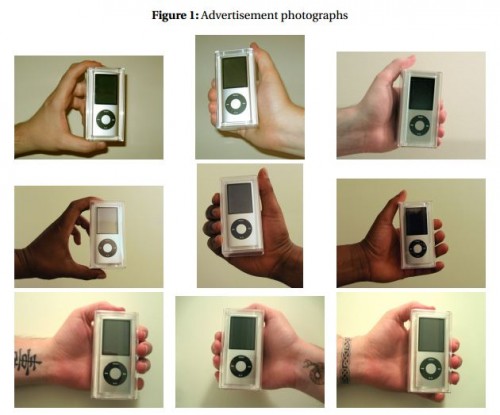For those of us in favor of same-sex marriage rights, it’s been an exciting few years. Politicians and legislatures have been increasingly tipping toward marriage equality. Lots of us are commending the powerful and high-profile individuals who have decided to support the cause.
But, let’s not be too grateful.
A figure at xkcd puts this in perspective. It traces four pieces of data over time: popular approval and legalization of both interracial marriage and same-sex marriage. It shows that the state-by-state legalization of same-sex marriage is following public opinion, whereas the legalization of interracial marriage led public opinion.
There’s a reason that we look back at Civil Rights legislation and see leadership. Politicians, litigators, and activists were pushing for rights that the public wasn’t necessarily ready to extend. In comparison, today’s power brokers appear to be following public opinion, changing their mind because the wind is suddenly blowing a new way.
I’m sure there are politicians out there taking risks at the local level. On the whole, though, this doesn’t look like leadership, it looks like political expedience.
Cross-posted at Pacific Standard.
Lisa Wade, PhD is an Associate Professor at Tulane University. She is the author of American Hookup, a book about college sexual culture; a textbook about gender; and a forthcoming introductory text: Terrible Magnificent Sociology. You can follow her on Twitter and Instagram.

